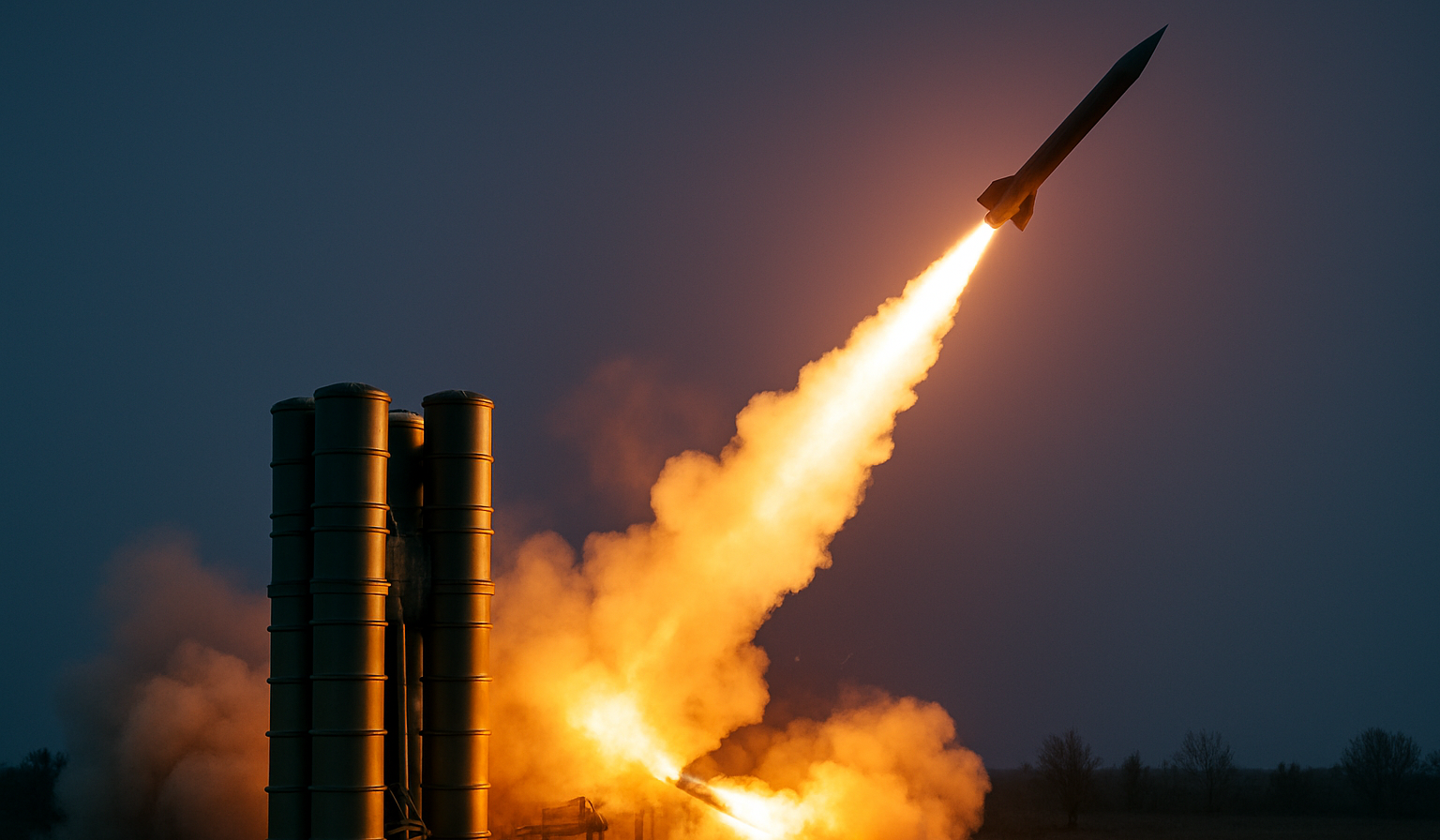In what is being hailed as a defining moment for India’s air defense capability, an Indian S-400 Triumf surface-to-air missile (SAM) system is reported to have shot down a Pakistan Air Force (PAF) Saab Erieye-2000 airborne early warning and control (AWACS) aircraft at a staggering distance of 314 kilometers during the brief but intense military confrontation between India and Pakistan in May 2025. This marks the longest-ever kill achieved by a SAM in combat, according to a high-level defense source who spoke on the condition of anonymity.

The operation, part of India’s swift and decisive response in ‘Operation Sindoor’, was aimed at neutralizing Pakistan’s strategic assets following provocations along the border. The S-400’s interception of the Pakistani AWACS aircraft is being lauded as a technological and tactical milestone for the Indian Air Force (IAF), underlining the efficacy of India’s integrated air defense system and long-term planning in acquiring advanced missile systems.
The S-400 system, procured from Russia under a $5.4 billion deal initiated by former Defense Minister Manohar Parrikar, has faced criticism and skepticism globally—especially during the Ukraine conflict where Western analysts questioned its effectiveness. However, in India’s case, the S-400 has proven its mettle by intercepting multiple aerial threats including air-launched cruise missiles, drones, and most significantly, the high-value AWACS platform, a key force multiplier for the Pakistan Air Force.
Sources indicate that this was not the first loss of a Saab Erieye-2000 for Pakistan, but it was certainly the most dramatic and strategically consequential. The aircraft was reportedly operating well within Pakistani airspace when the S-400 missile engaged and neutralized it, showcasing the extended reach and precision of India’s layered air defense network.
Supporting reports from Indian media, including the Hindustan Times, have lent credibility to these claims. Adding to the narrative, retired Air Marshal Masood Akhtar of the Pakistan Air Force confirmed the destruction of another AWACS platform during Operation Sindoor, this time struck by a BrahMos missile while parked in a hangar at Pakistan’s Bholari airbase. This dual loss further exposes the vulnerability of critical Pakistani aerial assets.
The significance of the 314-kilometer kill lies not only in its range but also in its implications for regional air dominance. The S-400 employs various types of missiles, including the long-range 40N6 which is capable of hitting aerial targets up to 400 kilometers away. It is supported by high-resolution radars and sophisticated command centers, allowing simultaneous tracking and engagement of up to 80 targets across multiple altitudes and directions. The road-mobile nature of the system adds to its survivability and adaptability during wartime scenarios.
India has currently inducted three S-400 units—two on the western front facing Pakistan and one on the eastern front near the China border. Deliveries of the remaining two units are pending due to delays attributed to the Ukraine war. Sources indicate that National Security Advisor Ajit Doval’s upcoming visit to Moscow will likely focus on accelerating these deliveries.
Encouraged by the system’s battlefield performance, Indian defense planners are reportedly exploring further purchases, including the next-generation S-500 ‘Prometheus’. Developed by Russia’s Almaz-Antey, the S-500 offers a 600-kilometer range and can intercept hypersonic weapons, ballistic missiles, and even low-earth orbit satellites. A joint production agreement with Russia is being considered, potentially enabling India to scale up its defenses for a future two-front war scenario.
The S-400’s performance is a testament to India’s evolving air defense doctrine, which emphasizes a layered, networked, and integrated approach. According to the IAF’s 2022 doctrine, the air defense architecture comprises outer layers formed by fighter jets equipped with air-to-air missiles, mid-layers of surface-to-air guided weapons (SAGWs) like the S-400 and MRSAMs, and inner layers defended by close-in weapon systems and anti-aircraft artillery.
Currently, the IAF operates nearly 50 SAM units, including Russian-origin Pechora, OSA-AK, Igla, Israel-assisted MRSAM, and indigenously developed Akash systems. This vast inventory surpasses even the number of fighter squadrons, reflecting India’s shift toward ground-based air defense solutions.
The Indian Armed Forces are also working towards a comprehensive Integrated Air Defense System (IADS) which merges fighter aircraft and surface-to-air missile platforms into a seamless defensive shield. This concept aims to ensure 24/7 readiness, rapid threat response, and the capacity to defend high-value targets from manned and unmanned aerial threats. As the military prepares for future conflicts characterized by hybrid warfare—blending state and non-state threats—the need for agile, advanced, and reliable defense systems becomes paramount.
Manohar Parrikar’s foresight in pursuing the S-400 deal despite international pressure, particularly from the United States under the CAATSA sanctions regime, now appears vindicated. His push for a layered air defense strategy and prioritization of high-end missile systems laid the groundwork for India’s modern air shield. Parrikar’s metallurgical engineering background and technocratic approach helped the Ministry of Defence take a firm stand on strategic autonomy and long-term defense procurement.
The events of May 2025 have not only reinforced the S-400’s reputation globally but also repositioned India as a formidable player in long-range air defense warfare. With adversaries like China reportedly rushing to equip Pakistan with fifth-generation stealth fighters like the J-35 at subsidized costs, India’s interest in upgrading to the S-500 and expanding its defensive umbrella is both timely and strategic.
As India fortifies its skies with cutting-edge missile technology, the message to adversaries is clear: any attempt to penetrate Indian airspace will meet a wall of steel—and possibly, a historic kill from hundreds of kilometers away.













